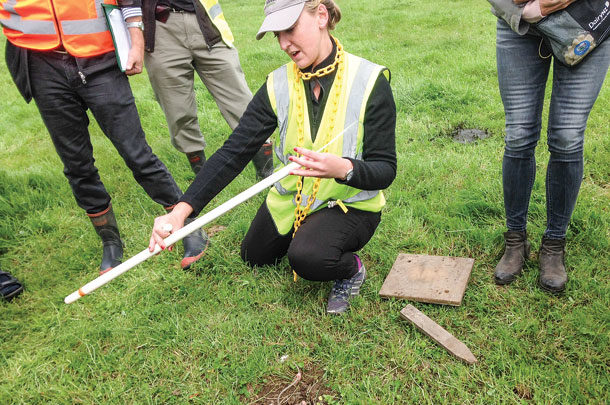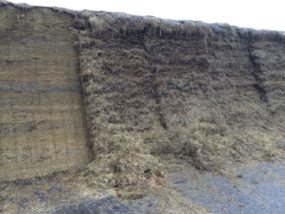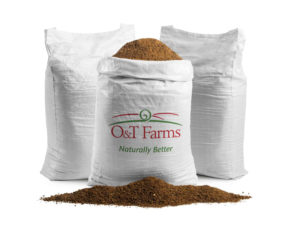The comprehensive project was set up in four regions across New Zealand to address issues relevant to the area, such as phosphorus and nitrogen loss, duration-controlled grazing, barn effluent application and improving mixed livestock systems.
“The core aim of this project is to provide farm systems that actually work for farmers,” says Diana Selbie, project manager with AgResearch. The timing aligns well with new restrictions in various regions regarding nutrient loss limits.
One project in particular is based out of Scott Farm, in the Waikato region of New Zealand, home to 400 dairy cows and larger-scale farming system research trials.
The goal of the Scott Farm Pastoral 21 project was to show farmers they could increase production up to 200 kilograms per hectare with increased profit per hectare while reducing nitrogen leaching.
Ultimately, the project is looking into providing proven, profitable systems to increase production while decreasing nutrient loss. “We also want to be reducing our environmental footprint but maintain productivity,” Selbie says.
Two herds are being compared, one called the “current herd,” which stands as a model of current farming systems in New Zealand, and the other is known as the “future herd,” where the trials and variations are carried out and evaluated.

Both herd fields are 13 hectares each, but while the current farm has 3.2 cows per hectare (41 cows total), the future farm has 2.6 cows per hectare (34 cows total).
Both herds have cows with high genetic merit, as well as cows that represent the average cow in New Zealand, because it is extremely important this project be applicable in the average dairy farm setting.
The project showed that better genetics does in fact help improve production; however, the system is certainly the leading factor for success.
“We’re trying to determine: With the lower stocking rate and lower nitrogen, can we maintain production and productivity and does it result in less nitrogen loss?” Selbie says. “Our models predict that the answers to both are ‘Yes, we can.’”
Over the last few years, the project has been able to decrease nitrogen leaching per hectare by 43 percent, from 60 kilograms per hectare to 35 kilograms per hectare.
As well, there was a 20 percent increase in milk production per cow and only a 2 percent decrease in milk production per hectare, which means fewer cows produced almost the same amount of milk. “So, if we produce the same amount of milk, we might need slightly more land,” Selbie says.
The cows in the future herd are trained to collect their feed and then go to a standoff area. The standoff area is important because most of the nitrogen loss comes from urine patches, particularly in the winter.
So the standoff pad, which doesn’t have a roof and is lined with wood chips, captures the urine rather than letting it leach into the ground. The animals spend between eight and 24 hours on the pad and only go out to pasture to get their food during the day.
As the cows near the end of their lactation period, they spend more time on the standoff pad. This is mainly because when cows near the end of their lactation period, this is also when the grass is nearing the end of its growing season and requires less nutrients, which leads to more leaching.
“While this isn’t uncommon, the difference is: This is done every day – we make it a routine,” Selbie says.
For the first three years of the project, the fields for the future herd received a maximum intake of 50 kilograms of nitrogen per hectare while the current herd receives 150 kilograms of nitrogen per hectare. However in the fourth year, the future herd received 90 kilograms of nitrogen per hectare throughout the year.
“The project was reviewed halfway through by a team of experts and farmers who said that there’s an opportunity to increase nitrogen use, particularly in spring, without impacting leaching result and grow some more pasture, and our model supported that, so we increased the nitrogen use,” Selbie says. She added that the results of the fourth year proved it to be true.
There is a 1-tonne gap of pasture between the current herd and future herd due to the decrease in nitrogen, but that was expected, and the project team has been working to try to close that gap. Overall, though, the efficiency of pasture use is the same.
Other important elements that ensured the success of this project included offering more pasture, the importance of lactation days (calve earlier, cull and dry off later) and avoiding chasing excessive peak production.
While overall, the project achieved its goal to increase production, there is still room for improvement in the way of profitability. Capital costs increased, particularly in the way of building and maintaining a standoff pad.
“If it’s well designed and well managed, it could fit in quite well,” Selbie says.
The final results of the project will be released this year as farmer guidelines so that, hopefully, some farmers may be able to implement similar systems. PD
Christina Franc is a freelance writer and director of communications for Qu’anglo Communications & Consulting in Ormstown, Quebec.
PHOTO 1: Diana Selbie demonstrates how nitrogen is measured in the fields. These poles are inserted into the ground at an angle to collect samples.
PHOTO 2: A representative of Dairy NZ stands in a future farm plot, explaining how the nitrogen doesn’t leach as much in the spring because of high growth. Photos by Christina Franc.







